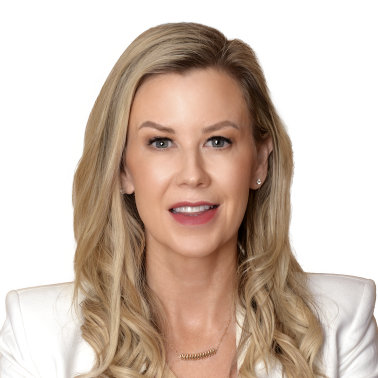
Making reports to your startup’s board of directors is a fundamental part of a CEO/founder’s duties Communicating regularly with the board helps you maintain transparency, and lets you take advantage of the board’s contacts and experience. So let’s look at what you should include in a board report.
How Often Should You Have Board Meetings?
First things first, you need to consider the frequency of your board meetings.
In general, you should have board meetings about every two months, in person. Sometimes companies will have them every six weeks and sometimes it’s every quarter. The bottom line is, it is really important to hold them on a regular basis so that you are in touch with your board and they can then help you when you need them.
Let the Board Help You
A lot of people find board meetings intimidating and expect the board to scrutinize them. They may also find board meetings to be time-consuming. While both of these things may be true, if the board doesn’t know what’s going on in the company, then they can’t help you if you’re facing issues.
Get the deck done early - and talk with board members before the meeting
Your board members will give you the best advice and perspectives if you’ve given them time to prepare for the board meeting. You can accomplish this in three important ways:
- Getting the board deck distributed early
- Meeting with directors prior to the board meeting
- Sharing news (especially bad news) as soon as practical, not just at the board meeting
Three ways to get the most out of your startup’s board meeting
1. Distributing the Board Deck Early
Distributing the board deck early - ideally at least a week before the meeting, at worst a couple of days before - is crucial. It allows board members to review the materials at their own pace, prepare questions or suggestions, and fully engage during the board meeting. If you are sharing a number of KPIs, getting the materials early lets the directors think about the numbers and how they compare to other investments, or how they compare to prior estimates or results. And it gives them a chance to ask their partners for advice.
Additionally, an early-distributed board deck helps establish an atmosphere of transparency and good governance. By getting the materials out early, you are demonstrating respect for the board members’ time and their role as strategic advisors, which can lead to a more collaborative and effective board dynamic. Even more importantly, you are proving that you know how to execute.
2. Meeting with Directors Prior to the Board Meeting:
One-on-one meetings with board members prior to the board meeting can significantly enhance the quality of board discussions and decisions. These meetings serve multiple purposes:
Pre-discussions: Discuss key issues and decisions that will come up during the board meeting. This ensures that board members are not surprised or caught off-guard during the actual meeting.
Get opinions: Gain feedback on strategic plans and proposals. Board members’ diverse experiences can provide unique insights and suggestions that you might not have considered. More importantly, it prepares you for how the group is going to decide or vote on important topics. For example, if two directors have different opinions on a strategic investment, you want to know that head of the meeting! It’s an early warning system for disagreements. Or, if a director is negative or against something the management team wants to do, it’s best to surface this ahead of time in a one on one conversation so you aren’t blindsided at the meeting.
Getting consensus. One of the VCs I used to work with would say that decisions shouldn’t be made at the meeting, they should simply be confirmed. Meeting ahead of time lets the CEO gain consensus and get the directors and investors to pre-agree to the most important decisions.
Relationship Building: Strengthen relationships and build trust. The more comfortable board members are with you, the more open and constructive they will be during board meetings. Given that follow on rounds are getting harder to raise, it is incredibly important to build solid relationships with your existing investors. You may need them to bridge finance your startup, so do everything you can to get them on your team.
Managing politics: Like it or not, board meetings can sometimes involve politics. Meeting individually with board members allows founders to manage potential conflicts or issues before they become disruptive in the full board meeting.
Education: Startups are often in new, rapidly evolving industries. Individual meetings can be a chance to educate board members on these changes, ensuring they are well-informed and able to provide relevant strategic guidance. Like it or not, many VCs are a bit too proud, and don’t want to look like they don’t know something in a meeting with their peers from other funds. So if you have an investor who can use some help getting up to speed on your industry, meeting ahead of time prior to the BOD gatherings can really hep that investor add-value to the startup, and can make them appreciate your leadership style.
If there is nothing serious happening, especially if you have worked with the directors for a while, you may be able to get by with a simple email exchange instead of a phone call. But even if there is nothing important, show the courtesy of asking the directors to chat with you prior to meeting so they can share anything is a great idea.
3. Sharing News (Especially Bad News) As Soon as Practical:
Keeping board members updated on important developments, especially negative ones, is a fundamental aspect of board management. Surprising the board with bad news during a board meeting can erode trust and lead to reactive, ill-considered decisions.
Sharing bad news as soon as practical allows board members to digest the information and provide thoughtful, strategic advice rather than hasty reactions. It also signals that you respect their role as key stakeholders, and you trust them to handle difficult situations, which can further strengthen your relationship with them.
In essence, effective board management hinges on preparation, communication, managing expectations, and respect. By implementing these three steps, you’ll set the stage for productive and impactful board meetings, fostering a board dynamic that can provide significant value to your startup’s success.
What to Include in the Board Deck
One of the best ways of letting the board of directors know what is happening in the company is to give them the proper financial reports in the board deck.
1. Financial Reports
Remember, members of your board could be on 10, maybe even 15, other boards, which means they are constantly going to board meetings and talking to portfolio companies. You should send the slides to directors one or two days before the meeting.
On the first or second page of your board deck we recommend having a financial status page that displays a group of very simple metrics. You can review key metrics for SaaS companies here. These allow the board to orient themselves at the start of the meeting.about what’s happening with the company and how they can help.
In this initial financial report we suggest including the following:
- Cash balance – this will immediately tell the board what is going on in the company and how much cash you have.
- Average three months of burn rate – they will divide the cash by the burn rate to get the months of runway outstanding.
- Your total cash runway – how many months of cash you have.
- MRR – monthly recurring revenue.
- ARR – annual recurring revenue.
- Bookings – these are contracts you’ve closed recently and whether it was a monthly or a quarterly bookings rate.
Laying out these basics in a clear table will give a clear indicator of your startup’s current financial situation. This could be that you’re in a crisis with six months of cash and a check needs to be written ASAP, or that you have 18 months of cash and so strategy and operating metrics can be focused on without needing a check.
This is another reason why it is important to present these metrics early in the presentation because this way you can reassure the board if there isn’t a crisis. It will allow them to think more strategically, improve the discussion, and enable them able to help you more effectively.
Otherwise, they are going to be trying to figure out where you are with your cash, your runway, and how many months you have. You’ll see them flipping through the presentation, looking for them, if you don’t have them in one of the first few pages. So put the financials up front, because time in a board meeting is precious.
2. Income Statement, Balance Sheet, and Cash Flow Statement
So, what comes after the first pages with those simplified metrics? Well, you will definitely want to have:
- Income statement
- Balance sheet
- Cash flow statement (potentially)
Firstly, depending on how far along and how complicated the business is, you may put the income statement and balance sheet on one page. You might have a couple of high-level call outs explaining any variance or growth in expenses, but hopefully those will be saying how great your sales team and show the revenue going up. This slide is a very baseline thing, and they just want to see it there.
The cash flow statement can be a little bit farther back, typically in the finance portion of the presentation. Sometimes you’ll have your CFO or VP of finance walk through this, or you’ll have the founder or CEO do it.
The cash flow statement is also helpful because the board can look at it and see if there are any big CapEx going on or things like that. They will also check your math on your burn rate and cash on the balance sheet.
3. In-Depth Operational Metrics
This brings us to the third set of reports you want to include in your board deck. These are a lot of in-depth operational metrics – often KPIs for the executive team – which are all aggregated.
We highly recommend that you have some type of appendix in this finance section, to help organize the different reports and their respective KPIs, for the board. What happens, more often than not, is you will have members of the management team, or the CEO, who will present these metrics in the flow of the presentation as they go through the functional groups.
For example, you will have the marketing portion of the presentation where the marketing VP will present metrics such as lead volume, customer acquisition cost, and things like that. And you should definitely let that marketing VP own those metrics and convey what is happening from their standpoint. Essentially, you want each portion to be presented by the VP responsible for that area.
Who Should Present What?
Let’s look at who should be presenting each of the following reports that should be included in the board deck. As we just mentioned, commentary from the VP of each individual area is really valuable for the board of directors.
Customer retention. The VP of customer success is most likely going to own the churn rate, and you want them to present this metric. That demonstrates ownership, and a good VP is going to talk about their metrics, own them, talk about how they’re improving, and illustrate that with historical data.
Sales. Another good example of the functional expert presenting their KPIs is the sales VP. The sales VP is going to present the number of customers, the average selling price, and any upsell metrics they can provide. That is the bread and butter of the sales portion of the presentation, so let them do that.
Customer lifetime value (CLV).The lifetime value of a customer could be owned by your marketing VP, the sales VP, or even the finance team, because they’re able to see the revenue generated by a client. They also look at retention and can aggregate this and create the lifetime value of a customer. This is one of the most important metrics a startup is ever going to present to the board of directors. If that lifetime value of the customer is really high, nothing gets a VC’s checkbook out quite like it.
Hiring. Hiring will be owned by either the CEO, or the finance VP or CFO, because each of the functional groups are going to make their own hiring decisions and roll it up into finance. So you will often see hiring presented in conjunction with the income statement and the balance sheet portion of the board deck. Otherwise you may see a breakout of hiring expectations. There are two main reasons for this:
- There will probably be some excitement in the functional groups, where they will be talking about how the marketing person is hiring a lead gen specialist, for example, or the sales person is considering hiring a director of sales and maybe two more inside sales reps. All of which is going to roll up into finance, and the burn rate at a startup is mostly influenced by people and by salaries. About 70 to 75% of all expenses at a startup are salaries and benefits, so this will bring up questions within the board.
- When the VCs see the expenses are projected to go up, or they see your expenses in the last six months going up, they will immediately start talking about hiring and whether or not it was a good investment. They will want to know what return on investment you’re getting from those people and what you have planned for the future.
This is why we recommend that you have the finance person or CEO present hiring information immediately after the income statement/balance sheet portion of the board deck, in order to pre-empt board and VC questions.
Early-stage company board meetings
Often, in early-stage companies, the CEO will be presenting all of these reports, but it is still important to have them presented in those functional groups. The CEO will need to answer questions regarding each report in an organized format, such as discussing the startups marketing, what is coming from it, what the new programs are, how much it is costing, marketing performance and the customer acquisition cost. All these topics that need to be grouped in order to make sense and create clarity for the board.
Key Points to Remember
When you’re thinking about your board report, key things to remember are:
- Board meetings are not just for the board. They are also for the executive team and the CEO to get organized, stay focused and really hone in on what is moving the company forward and the key priorities to build on.
- We recommend holding board meetings every two months, maybe quarterly, as it is a really powerful exercise for the entire company.
- You should definitely aggregate all of the different KPIs into an appendix or contents so the board can follow the meeting and look back on it later.
- You should also send the board deck out one or two days before the meeting, so directors can review it. This makes their job easier and means they’re not flipping through the slides constantly.
- Consider who presents what, since individual VP input is really valuable.
Overall, presenting these metrics is really helpful. It will make you a more disciplined and better-managed company. If you have any questions on reports, startup accounting, startup bookkeeping, taxes, or venture capital please contact us.
You can also follow our youtube channel and our blog for information about accounting, finance, HR, and tax for startups!











